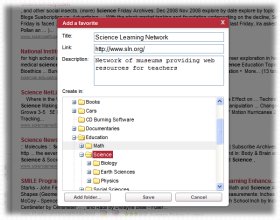|
Education
Web
Viewing 1-3 of 3 total results
1. Locate specific information from functional text (e.g., letters, memos, directories, menus, schedules, pamphlets, search engines, signs, manuals, instructions, recipes, labels, forms). PO 2. Interpret details from functional text for a specific purpose (e.g., to follow directions...
1
0
1. Locate specific information from functional text (e.g., letters, memos, directories, menus, schedules, pamphlets, search engines, signs, manuals, instructions, recipes, labels, forms). PO 2. Interpret details from functional text for a specific purpose (e.g., to follow directions, to solve problems, to perform procedures, to answer questions). Concept 3: Persuasive Text Explain basic elements of argument in text and their relationship to the author’s purpose and use of persuasive
4
0
http://www.ade.state.az.us/standards/language-arts/bygradelevel/RdgGr4.pdf#page=4
www.ade.state.az.us/standards/language-arts/bygradelevel/RdgGr4.pdf#page=...
1. Locate specific information from functional text (e.g., letters, memos, directories, menus, schedules, pamphlets, <span class="highlight">search</span> <span class="highlight">engines</span>, signs, manuals, instructions, recipes, labels, forms). PO 2. Interpret details from functional text for a specific purpose (e.g., to follow directions, to solve problems, to perform procedures, to answer questions). Concept 3: Persuasive Text Explain basic elements of argument in text and their relationship to the author’s purpose and use of persuasive
clarity, and relevancy of functional text. PO 1. Locate specific information from functional text (e.g., letters, memos, directories, menus, schedules, pamphlets, search engines, signs, manuals, instructions, recipes, labels, forms). PO 2. Interpret details functional text for a sp...
1
0
clarity, and relevancy of functional text. PO 1. Locate specific information from functional text (e.g., letters, memos, directories, menus, schedules, pamphlets, search engines, signs, manuals, instructions, recipes, labels, forms). PO 2. Interpret details functional text for a specific purpose (e.g., to follow directions, to solve problems, to perform procedures, to answer questions). Concept 3: Persuasive Text Explain basic elements of argument in text and their relationship to the author’s
4
0
http://www.ade.state.az.us/standards/language-arts/bygradelevel/RdgGr5.pdf#page=4
www.ade.state.az.us/standards/language-arts/bygradelevel/RdgGr5.pdf#page=...
clarity, and relevancy of functional text. PO 1. Locate specific information from functional text (e.g., letters, memos, directories, menus, schedules, pamphlets, <span class="highlight">search</span> <span class="highlight">engines</span>, signs, manuals, instructions, recipes, labels, forms). PO 2. Interpret details functional text for a specific purpose (e.g., to follow directions, to solve problems, to perform procedures, to answer questions). Concept 3: Persuasive Text Explain basic elements of argument in text and their relationship to the author’s
noticed fox tracks in the field. The farmer needs to find her quickly. Rosie is a creature of habit and always follows the same route around the barnyard. It is very important that the farmer travels each edge exactly once in his search. Find the path the farmer should take. Where does the fa...
1
0
noticed fox tracks in the field. The farmer needs to find her quickly. Rosie is a creature of habit and always follows the same route around the barnyard. It is very important that the farmer travels each edge exactly once in his search. Find the path the farmer should take. Where does the farmer begin and end his search? Are there other paths the farmer can travel and still visit each edge only one time? If so, name those paths. NOTE: A path in a graph is a connected sequence of edges that starts at
19
0
http://www.ade.state.az.us/standards/math/Articulated08/Gradeleveldocs/MathGrade4.pdf#page=19
www.ade.state.az.us/standards/math/Articulated08/Gradeleveldocs/MathGrade...
noticed fox tracks in the field. The farmer needs to find her quickly. Rosie is a creature of habit and always follows the same route around the barnyard. It is very important that the farmer travels each edge exactly once in his <span class="highlight">search</span>. Find the path the farmer should take. Where does the farmer begin and end his <span class="highlight">search</span>? Are there other paths the farmer can travel and still visit each edge only one time? If so, name those paths. NOTE: A path in a graph is a connected sequence of edges that starts at
|
